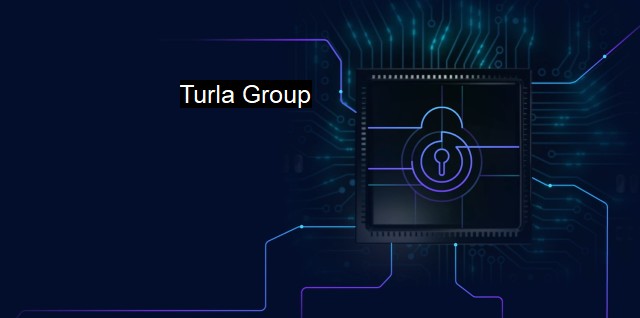What is Turla Group?
Turla Group: The Advanced Persistent Threat Sowing Sophisticated Cyber Espionage Across Government Organizations, Diplomatic Agencies, and Military Targets Globally
The Turla Group is a recognized and renowned entity in the cyber world, known for its significant impact on cybersecurity globally. Originating from Russia, this infamous hacking group has been active since at least 2008, causing havoc to numerous institutions over the years. What sets this group apart from many other hacking groups is the complexity and sophistication of their operations. This mysterious group continues to fuel concerns and discussions within the Antivirus and cyber-security space.Also referred to as Snake, Uroburos, or Krypton, the Turla group has been linked to various high-profile attacks targeting government bodies and embassies, amongst other entities. Using sophisticated tactics, the group crafts malware that can infiltrate and compromise targeted systems, often burrowing deep to retain long-term access and getting difficult to detect and remove. The ultimate objective is often stealing sensitive and confidential information. The intrigue surrounding this group owes largely to their suspected ties with the Russian federal government.
The Turla group modus operandi is sophisticated. In creating its malware, the group exploits zero-day vulnerabilities, installs backdoors on compromised systems, and uses rootkit tactics, ensuring the infected system remains under their control. Antivirus softwares often struggle to deter or detect the intrusions, considering the group’s malware mimicking nuclear variants of existing safe files, thereby bypassing security layers seamlessly. to prevent reverse engineering of its techniques, the group often resorts to advanced obfuscation techniques that prove difficult for cybersecurity firms to understand and counter.
One of the most potent and persistent strains of malware associated with the Turla Group is the eponymous Turla malware - a highly complex piece of code that can lurk behind a seemingly safe software or file. This Trojan is famed for its ability to remain dormant and completely evade detection, only springing to life to fulfil its nefarious aim when certain patterns or behaviours are detected on the host system.
Worryingly, the Turla group's evolving understanding and exploitation of zero-day vulnerabilities have kept them elusive. Naturally, this informs antivirus and malware defence techniques that revolve around recognising patterns in malicious software. As the group consistently develops and deploys its custom-built malware, conventional defence playbooks prove ineffective, thus continually keeping cybersecurity counterparts on their toes.
Another striking aspect of the Turla group is its preference to appropriate and employ tools developed by other groups in their operations. For Instance, the hacking outfit seemingly repurposed hacking tools used by Iranians during an attack on an English-speaking country, a testament to their unpredictable and complex methodologies. This obfuscating tactic amplifies the challenges faced by cyber defence entities, complicating the precise attribution of cyber-attacks.
The antivirus realm’s sobering reality is that we cohabit with sophisticated hacking groups like Turla – proficient at cloaking their actions and neutralising traditional countermeasures. As such, these predators tirelessly seek exploitable vulnerabilities within systems, prompting organisations to necessitate adapting and evolving their preventive measures. Being proactive and employing cutting-edge security measures that move beyond conventional virus detection methods is crucial.
The mention of the Turla Group ring alarms in cybersecurity and antivirus industry due to the group’s sophisticated hack tactics and profound understanding of system vulnerabilities. its existence urges the cybersecurity industry to invest in advanced, predictive technologies and foster broader collaboration among nations and corporations to combat the increasing challenge of global cyber threats better. Whereas the Turla group exemplifies a massive threat to cybersecurity, it also represents a profound opportunity to advance and bolster defense mechanisms against such advanced, state-sponsored threats.

Turla Group FAQs
What is Turla Group in the context of cybersecurity?
Turla Group is a notorious cyber espionage group believed to have links to the Russian government. They are known for carrying out sophisticated and highly targeted attacks against governments, military organizations, and other high-value targets.What is the focus of Turla Group's attacks?
Turla Group's attacks are primarily focused on stealing sensitive information from their targets, including government secrets, intellectual property, and other valuable data. They use a range of advanced techniques to gain access to their targets' networks, including spear phishing, zero-day exploits, and social engineering.What is the impact of Turla Group's attacks on antivirus programs?
Turla Group's attacks often involve the use of malware that is designed to evade detection by antivirus programs. They are known for using sophisticated techniques to bypass security measures, including encrypting their malware and using custom-built command-and-control servers. This can make it very difficult for antivirus programs to detect and block their attacks.What steps can organizations take to protect themselves from Turla Group attacks?
Organizations can take a number of steps to protect themselves from Turla Group attacks, including implementing strong password policies, using two-factor authentication, and regularly updating their antivirus and other security software. They should also be aware of the latest threats and vulnerabilities, and take steps to monitor and secure their networks against potential attacks.| | A | | | B | | | C | | | D | | | E | | | F | | | G | | | H | | | I | | | J | | | K | | | L | | | M | |
| | N | | | O | | | P | | | Q | | | R | | | S | | | T | | | U | | | V | | | W | | | X | | | Y | | | Z | |
| | 1 | | | 2 | | | 3 | | | 4 | | | 7 | | | 8 | | |||||||